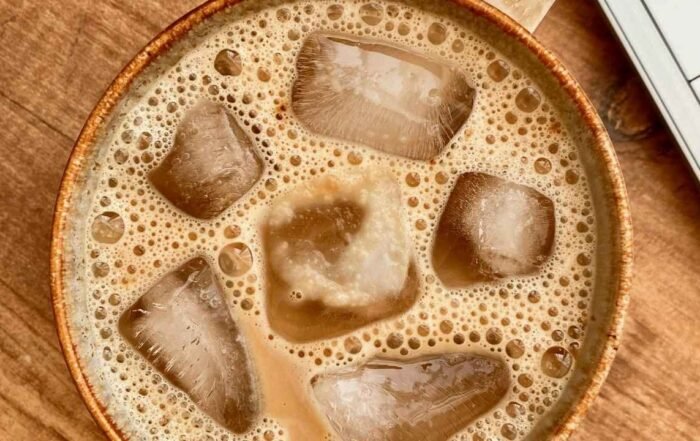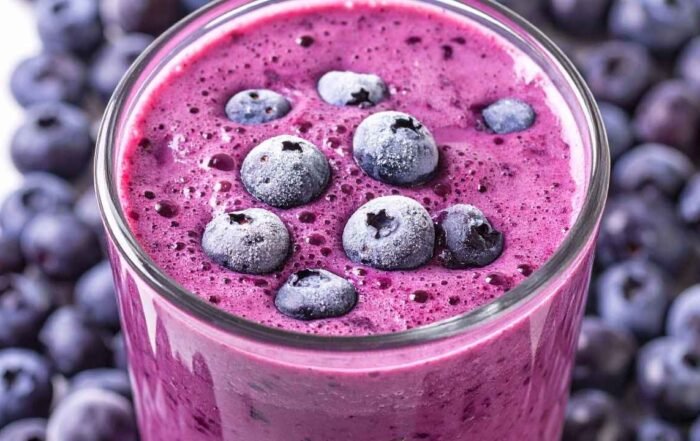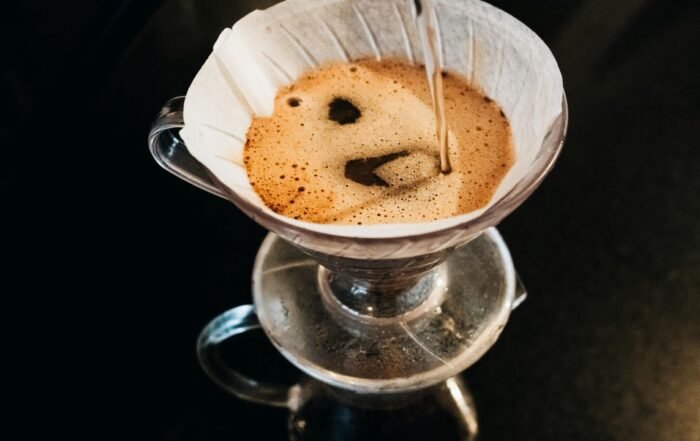In this Article
- What Is Froth and Why Does It Matter?
- How To Make Froth Milk Without a Frother
- Kitchen Tools You Can Use Instead of a Frother
- Stovetop and Microwave Techniques for Frothing
- How to Froth Creamer Without a Frother
- Tips for Perfect Froth Every Time
- Creative Drinks You Can Make With Frothed Milk
- Final Thoughts | Mastering Froth Without Fancy Tools
- Frequently Asked Questions
- Leave A Comment Cancel reply
- Sign up to the newsletter
- Related Posts
- Privacy Preferences

The creamy, velvety layer on top of your coffee completely changes everything. Frothy milk gives an otherwise normal cup richness and eye-catching appeal, therefore elevating your morning routine.
The Role of Froth in Lattes, Cappuccinos, and More
The distinctive texture that distinguishes traditional coffee beverages is froth. It produces that Instagram-worthy appearance we all enjoy in our favorite beverages, balances bitter coffee tastes, and offers a silky mouthfeel.
Can You Froth Milk Without Special Tools?
Absolutely! Everything required to produce lovely froth is already in your kitchen. Saving money while offering wonderful homemade coffee beverages, simple household items can generate effects comparable to costly equipment.
What Is Froth and Why Does It Matter?
Milk froth is made up of small air bubbles caught in heated milk proteins. Learning how to make froth presents countless opportunities for improving your everyday coffee experience at home.
Understanding the Science Behind Milk Froth
Milk proteins break down from heat, becoming pliable enough to enclose air bubbles. This mechanism produces steady foam that retains shape and provides uniform texture throughout your drink.
Texture and Flavor Benefits of Frothed Milk
Frothed milk softens coffee’s sharpness and provides creamy sweetness. Against liquid coffee, the light texture offers a pleasing contrast that enhances every mouthful and makes each sip more pleasurable and satisfying than usual milk additions.

How To Make Froth Milk Without a Frother
Making great foam at home doesn’t need any kind of special equipment. With things already in your kitchen, you can get professional-quality results utilizing how to make froth milk without other methods.
Using a Mason Jar or Shaker
Fill a clean mason jar halfway with warm milk, then seal firmly and shake strongly for thirty to sixty seconds. The movement produces air bubbles that turn into a lovely froth. Remove the lid and microwave for 30 seconds to steady the foam.
Whisking by Hand for a Quick Solution
Pour warm milk into a deep bowl and quickly whisk in a circular motion. Whisk for 1–2 minutes until froth appears on top. With this approach, you have total texture control and little after-cleaning.
Kitchen Tools You Can Use Instead of a Frother
Milk foam is created well with your usual kitchen equipment. These substitutes provide professional results without buying specialized coffee equipment.
Handheld Whisks and Electric Mixers
Electric mixers produce thick, steady foam rather quickly. Splattering can be prevented by using the whisk attachment on low speed. Though more work and time are needed to get the same fluffy texture, handheld whisks also function.
French Press Method for Thick Froth
Heat milk to 150 degrees Fahrenheit, then pour into a French press and rapidly push the plunger for fifteen to twenty seconds. The mesh screen captures air ideally, producing thick, cafe-quality froth that keeps its form wonderfully in beverages.

Stovetop and Microwave Techniques for Frothing
The production of long-lasting froth depends greatly on heat. With appropriate timing and temperature management, either stovetop or microwave approaches provide great results.
Heating Milk for Best Froth Results
Warm milk to 140–150 degrees Fahrenheit over medium heat, stirring always to avoid burning. Hot milk froths better than cold, but overheating destroys proteins necessary for stable foam. When streaming starts, watch closely and remove the heat.
Shaking and Microwaving for Extra Foam
For greatest volume, mix shaking with microwave warming. First shake cold milk; microwave for thirty seconds. More bubbles are produced and they stick together for longer-lasting froth in your drinks thanks to this two-step method.
How to Froth Creamer Without a Frother
Coffee creamer froths differently from plain milk, but it nonetheless produces amazing results. Knowing how to froth creamer without a frother opens up more creative possibilities for flavored foam concoctions.
Dairy vs. Non-Dairy Creamers in Frothing
Dairy creamers froth more readily because of their fat level and protein arrangement. Though they can create less foam, non-dairy solutions like almond or oats creamer still work. Coconut creamer makes a very rich, steady foam that goes well with coffee.
Simple Tricks for Creamy Foam at Home
To stabilize creamer foam, add a little sugar. Creamers are already concentrated, thus use slightly less liquid than with milk. Heat gently to prevent separation or curdling problems; shake or whisk longer to make up for lesser protein content.
Tips for Perfect Froth Every Time
Knowing important factors influencing foam quality helps to create consistency. These tried-and-true methods ensure superior results each time you try to froth milk at home.
Choosing the Right Type of Milk
Higher fat concentration gives whole milk the most stable and richest froth. Two percent milk also functions excellently. Skim milk produces more bubbles but less creamy texture; plant-based milks vary considerably in their frothing capabilities.
Temperature and Technique Essentials
Never boil milk; it damages proteins that froth. As milk gets more challenging to froth as it cools, act fast once it is heated. Thoroughly clean equipment as residue impacts flavour quality and inhibits bubble generation.

Creative Drinks You Can Make With Frothed Milk
Froth milk opens opportunities beyond simple coffee for many different beverages. Play with tastes and presentations at home to produce café-worthy beverages.
Homemade Lattes and Cappuccinos
To layer, slowly add frothed milk into a mug of espresso or strong coffee. While lattes invert this proportion, cappuccinos need more froth than milk. A little sprinkling of cinnamon or cocoa powder on top helps both beverages.
Using Froth in Hot Chocolate and Tea
Hot chocolate turns into a sumptuous treat when frothed milk is used. It also pairs perfectly with London fog drinks, matcha lattes, and chai tea. Adding visual appeal to any warm drink, the creamy texture also enhances sweet tastes.
Final Thoughts | Mastering Froth Without Fancy Tools
Making lovely milk froth calls for no costly tools or unique talent. These easy methods let anyone make cafe-quality drinks at home. Since practice makes perfect, try many ways to identify your preferred approach for dependable, delectable results.
Frequently Asked Questions
What temperature should milk be for frothing?
Heat milk to 140-150°F for best results. This temperature allows proteins to trap air effectively without destroying the milk’s structure.
Why won’t my milk froth properly?
Common issues include using milk that’s too hot or cold, dirty equipment, or low-fat milk that lacks sufficient proteins for stable foam formation.
How long does frothed milk last?
Fresh froth lasts about 5-10 minutes before settling. Use immediately for the best texture and appearance in your coffee drinks.









